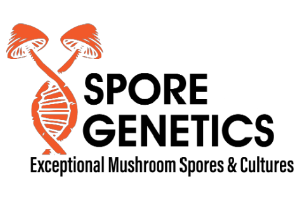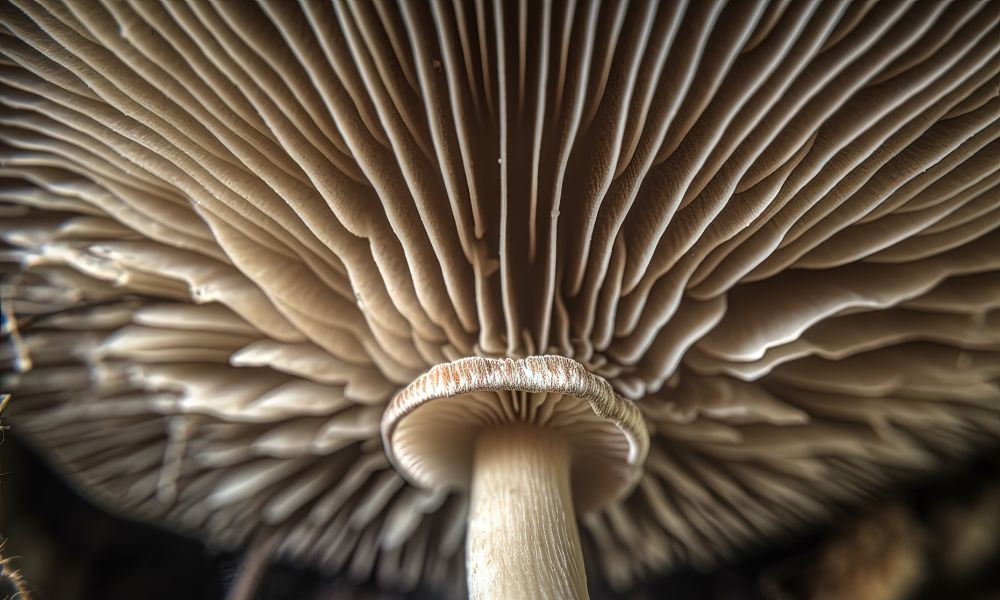What Are Mushroom Spores? Key Things To Know About
Posted by admin on Oct 12th 2023

Welcome to an exploration of the fascinating world of mushrooms, where we’ll delve deeper than the familiar cap and stalk. Mushrooms have long been celebrated for their culinary uses, their potential medicinal properties, and their role in our ecosystems. However, a lesser-known yet equally vital part of a mushroom’s existence lies in its spores. These tiny particles play a crucial role in the survival and propagation of the species in question.
This guide aims to enhance your knowledge of mushroom spores, their significant role in a mushroom’s life cycle, and why they matter. We’ll also explore more key things to know about what mushroom spores are, including research and identification.
Join us as we look closely at these microscopic wonders and reveal in-depth knowledge about the world of mushroom spores. Whether you’re a budding mycologist or simply curious about how spores work, this guide will offer valuable insights and broaden your knowledge base.
Mushroom Spores Defined
Spores are microscopic reproductive units that serve as the starting point for a new mushroom; they’re analogous to the seeds in plants. Produced by the millions, these tiny particles reside beneath the cap of a mushroom, specifically in the gills, pores, or teeth, depending on the species. When conditions are optimal—typically involving plenty of moisture and a suitable temperature—the mushroom releases spores into the environment.
This release marks the beginning of an extraordinary journey. In nature, these spores are carried by the wind until they land on a suitable growing substrate and grow into a mass of thready cells called mycelium. As the mycelium consumes nutrients from the substrate, it continues to grow and expand. With time, tiny stalks begin to poke their way upward and develop into full mushrooms.
Spores and Reproduction
Mushroom spore reproduction is a fascinating process that depends on a delicate balance of several factors. In the natural world, various environmental conditions play a large role in the success of spore reproduction.
Moisture
If you’re familiar with mold or mildew, you know that fungi love damp places. Mushroom spores are no different. Adequate humidity aids in the maturation and release of spores from the parent mushroom and helps boost mycelial growth in later stages.
Temperature
Most mushroom spores prefer moderate temperatures for proper release and germination. Drastic changes in temperature or weather conditions can upset that germination process and hinder the spores’ successful reproduction.
Substrate
Mushroom substrate is analogous to the soil that helps plants flourish; in other words, it’s a growing medium. Substrate provides the necessary nutrients for spore germination and mycelial growth. Different types of mushroom spores react well to different substrates. Some may thrive on decaying wood, while others prefer manure or regular soil.
If a spore lands on an unsuitable substrate, it won’t germinate properly and the mushroom’s life cycle will stop in its tracks.
Types of Mushroom Spores
In your spore research and taxonomical journey, you’ll find that mushroom spores exhibit a diverse range of characteristics. Take a closer look at the spores suspended inside your mushroom spore syringe by examining them with a microscope. Each type of spore has unique features that set it apart and help you identify it accurately. Spores are often categorized based on their shape, color, and the structure from which they originate.
Basidiospores
These are a common type of spore found in many mushrooms. Basidiospores develop on a structure called a basidium, typically four spores per basidium. Note that they can be spherical, elliptical, or kidney-shaped when you examine them under a microscope.
Basidiospores also display a wide range of colors, from hyaline (transparent) to various shades of brown. The method of spore release in basidiospores is unique—they shoot off the basidium with a sudden burst of force.
Ascospores
Ascosporic fungi produce these spores, which are developed inside a sac-like structure called an ascus. Each ascus usually contains eight ascospores, though that number can vary. Ascospores are typically cylindrical or elliptical in shape, and they exhibit a wide spectrum of colors.
When conditions are just right, ascospores are released from the ascus in a rapid, explosive manner similar to that of basidiospores.
Chlamydospores
Unlike basidiospores and ascospores, chlamydospores do not form on specialized structures. Instead, they develop directly from the hyphae or mycelium of the fungus. They’re typically spherical and thick-walled, providing resistance to adverse environmental conditions.
Because they are so sturdy, chlamydospores can hold up to harsh environmental conditions where other spores might perish.
Oidiospores
Also known as conidia or conidiospores, these are a type of spore that reproduce asexually. They form at the tips or sides of hyphae, and they appear in various shapes, sizes, and colors, depending on the species.
Oidiospores are set apart from other spore varieties due to their unique reproduction method; they don’t require any kind of mating process.
Spores in Scientific Research
Mushroom spores hold a significant place in the realm of scientific research and medicine. Their unique properties and diverse characteristics make them an invaluable tool for researchers.
Taxonomic Classification
Spores play a critical role in the identification and classification of different mushroom species. The spores’ shape, size, color, and arrangement provide key information about the genus and species of a given mushroom. Microscopic examination of these spores enables mycologists to differentiate between closely related species and classify them accurately.
Biological Study
Beyond identification and classification, mushroom spores serve as critical research tools in various biological studies. Researchers use them to investigate the life cycles of mushrooms, their reproductive strategies, and their adaptations to different environments. The unique dispersal mechanisms of different spore types also offer promising avenues for ecological and evolutionary research.
Medicinal Potential
In the medical field, mushroom spores are garnering more and more attention for their potential therapeutic properties. Certain mushrooms, like Reishi, produce spores that contain bioactive compounds with potential medicinal benefits like anti-inflammatory properties. These findings have opened up new opportunities for the use of spores in the development of novel treatments and medications.
Mushroom spores hold an intriguing position in the natural world and in scientific research. Their ability to reproduce and spread across varied environments demonstrates their resilience and adaptability. The unique characteristics of different types of spores offer a fascinating insight into the diverse world of fungi.
The role of these spores extends beyond nature and into the realms of science and medicine. They are invaluable tools for researchers, assisting in the accurate identification and classification of mushroom species. Furthermore, their potential medicinal properties present promising avenues for new treatments and therapies.
Knowing these key things about mushroom spores isn’t just for mycologists. If you’re interested in the broader fields of biology and ecology, broaden your education on the role of spores in mushroom reproduction, research, and classification.


